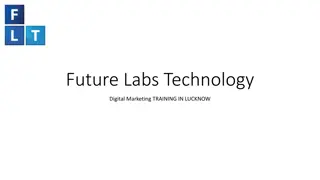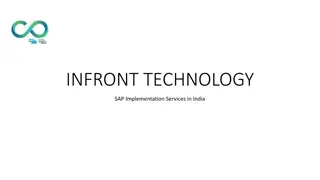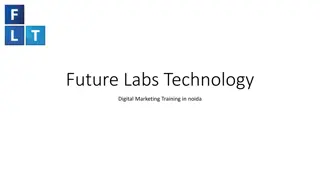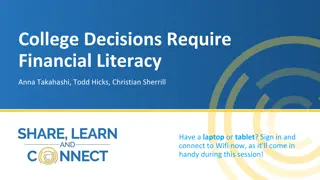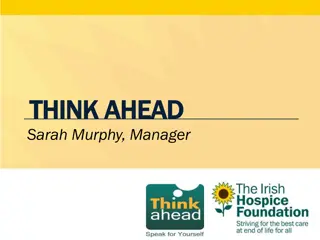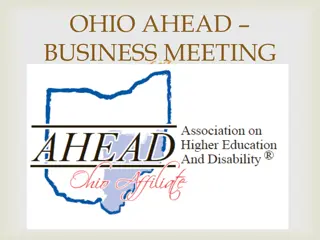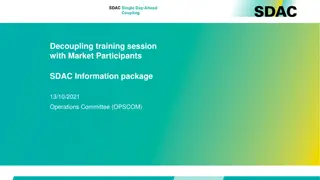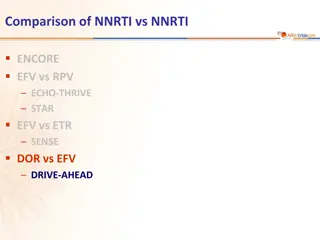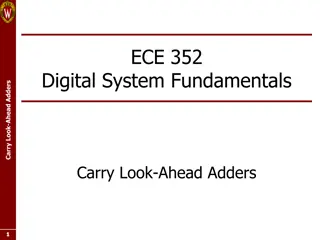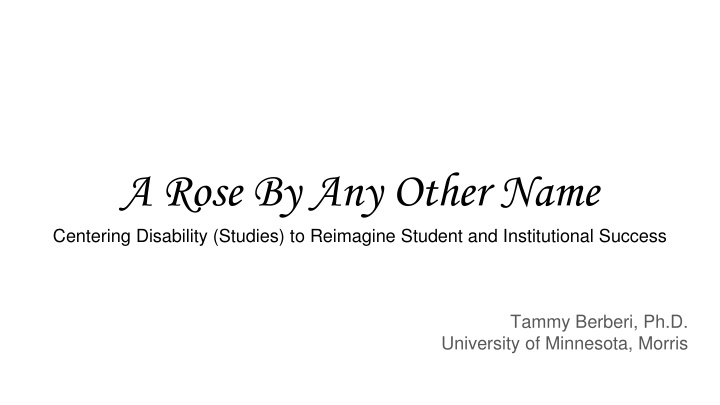
Reimagining Student and Institutional Success through Disability Studies
Explore the transformative possibilities of centering disability studies in academia to enhance student success and institutional change. Join discussions, activities, and community dialogues to promote inclusivity and equity in higher education.
Download Presentation

Please find below an Image/Link to download the presentation.
The content on the website is provided AS IS for your information and personal use only. It may not be sold, licensed, or shared on other websites without obtaining consent from the author. If you encounter any issues during the download, it is possible that the publisher has removed the file from their server.
You are allowed to download the files provided on this website for personal or commercial use, subject to the condition that they are used lawfully. All files are the property of their respective owners.
The content on the website is provided AS IS for your information and personal use only. It may not be sold, licensed, or shared on other websites without obtaining consent from the author.
E N D
Presentation Transcript
A Rose By Any Other Name Centering Disability (Studies) to Reimagine Student and Institutional Success Tammy Berberi, Ph.D. University of Minnesota, Morris
overview - 20 minutes offer some data and rationale for assuming an active and collaborative role in institutional transformation - 30 minutes two activities in small groups: - discuss checklist for institutional change - imagine success toolkits - 10 minutes community discussion
rules of play - Get ready - handout (12 pt. and 17 pt. font) - notecard to submit a question - Be you make yourself at home in this space, do what you need to do to be comfortable and engaged - Interrupt me at any time - let me know that some aspect of the presentation is inaccessible to you - ask a question
goals - to continue a conversation about race and disability that has been advanced by many in recent years - to think about the legacies and everyday impact of separate spaces - - separate physical spaces on our campuses - separate discursive spaces for data pertaining to disabled people and others who are marginalized by White, able-bodied, gender-normative institutional culture - to reframe our common cause: promoting student success and graduation, thereby advancing social and occupational integration, as well as equity.
by the numbers, 1: enrollment trends over the past 50 years today(ish) HS grads who enroll in college 3.6 million, 45% (1960) 20.4 million, 70-80% (2009) HS grads, students of color 38.4 / 50% (1972) 62.6 / 67.1% (2015) Low-income enrollment 34.7% (1975) 63.1 (2015) Older than 25 30% non-traditional 73% See Foreword by Steve Carroll in Gabriel, Kathleen F. (2018). Creating the Path to Success in the Classroom: Teaching to Close the Graduation Gap for Minority, First-Generation, and Academically Unprepared Students.
by the numbers, 2: graduation rates Cohort 1997-2007 at 4-year institutions: American Indian/Alaska Native 35.6% Black 38.5 Hispanic-Latino 43.5 White 57.3 Asian / Pacific Islander 63 as cited by Gabriel, chapter 1.
by the numbers 3, race and disability Race/ethnicity (percent) disabled undergrads disabled grad students Am. In. / Alaska Native 27.8 11.8* Pacific Islander 23.6 14.9* Two or more races 22.1 19.7 White 20.8 13.0 Hispanic 18.3 14.3 Black 17.2 10.3 Asian 15.2 6.2 NCES Fast Facts: Students with Disabilities, 2019.
strategies - Use the campus checklist as a starting point for thinking about transformational institutional change - Build relationships with colleagues in your multicultural and queer resource centers - Develop a workshop, faculty panel, and or inclusivity checklist to enclose with accommodation letters or to hand to faculty who express an interest in learning more about inclusive teaching. Recommended: works cited in this presentation. - Develop an inclusivity toolkit for students
Activity 1: a campus checklist for disability inclusivity - Complete the checklist individually. - Discuss strategies for improving (checking) items that you haven t - what have colleagues been able to achieve and how did they get it done? - Let me know of items that are missing from the checklist.
Activity 2: inclusivity toolkit -If it were an assemblage of good things, what would be in it? - sleep accessories - comfort plushie - planner - colored pencils - wallet card to campus resources - conversation cards to use with ...one s roommate, one s adviser, one s instructors - a personalized list of people in one s cheering section - WHAT ELSE? - - Imagine the creative allies you know (advisers, success coaches, faculty). What would they add to it? For you, is this swag you give to first-year students? A build-your own activity with alongside faculty and staff, and students? Simply a handout in Orientation folders and key locations on campus?
good reads (that inspire and inform this presentation) Dolmage, Jay T. (2017). Academic Ableism: Disability and Higher Education. Gabriel, Kathleen F. (2018). Creating the Path to Success in the Classroom: Teaching to Close the Graduation Gap for Minority, First-Generation, and Academically Unprepared Students. Also see foreword by Steve Carroll. Scott, Sally and Wade Edwards. (2019). Disability and World Language Learning. Stewart, Abigail and Virginia Vallian. (2018). An Inclusive Academy. Tuitt, Frank, Chayla Haynes, and Saran Stewart, editors. (2016). Race, Equity, and the Learning Environment: The Global Relevance of Critical and Inclusive Pedagogies in Higher Education.



